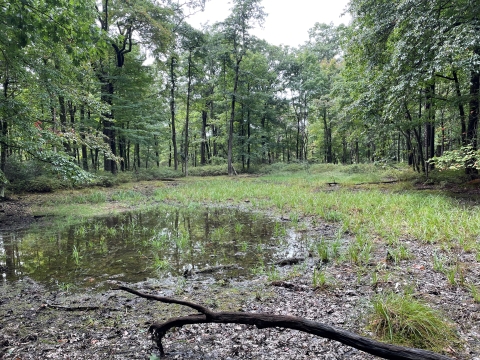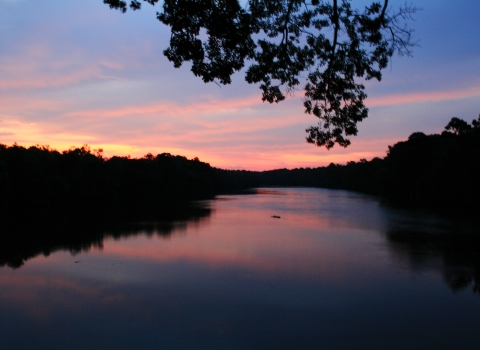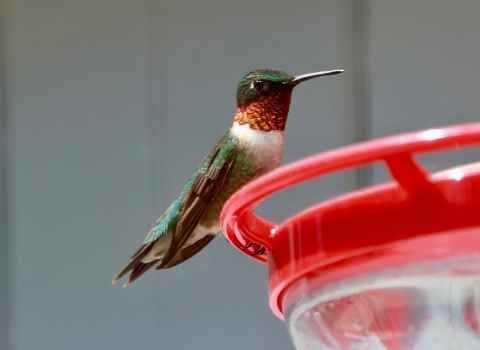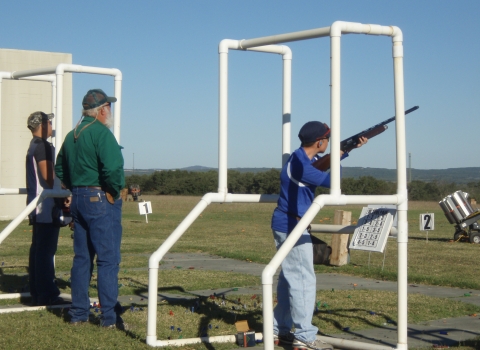Have you ever had a rough day and wished you could hide out until things got better?
The northeastern bulrush understands. If things aren’t looking good for this wetland plant, it actually can hide out underground, for years, and then reemerge when conditions improve on the surface.
They say patience is a virtue, and it has paid off for this plant. Thanks to increasing efforts by partners to look for and conserve this adaptable sedge — including through surveys funded by federal endangered species grants — we are finding it in more places than ever.
Thirty years ago, there were 13 known populations of northeastern bulrush in seven states. The scarcity of the plant across its range led the U.S. Fish and Wildlife Service to list the species as endangered under the federal Endangered Species Act in 1991.
Now, based on a review of the best available information, the Service is proposing to remove the northeastern bulrush from the list of threatened and endangered species. Today, there are 148 known populations in eight states — an impressive 11-fold increase.
Pennsylvania is key to recovery
Here’s what should really grab your attention: nearly 100 of today’s populations are in Pennsylvania.
There are two important factors driving northeastern bulrush’s rebound in the Keystone State. First and foremost, growing conditions.
“Pennsylvania appears to be a sweet spot for this species,” said Mary Ann Furedi, an ecologist for the Pennsylvania Natural Heritage Program.
She explained that northeastern bulrush often occurs in vernal pools, small wetlands with seasonally fluctuating water levels that offer the complex hydrology the plant needs to thrive. Because of some lucky combination of topography and climate, Pennsylvania happens to have a lot of these ephemeral wetlands.
But the second factor is arguably just as important for a species that disappears intermittently: vigilance.
When northeastern bulrush was listed in 1991, it was just as scarce in Pennsylvania as anywhere else, with only a few known populations. But the following summer, surveys revealed 17 previously undocumented populations in the state — populations that had likely been there all along.
When the Service released the species recovery plan in 1993, Furedi saw an opportunity. Among the recovery tasks listed in the plan was a need to “develop consistent, reliable censusing techniques for use throughout the species’ range.”
Building on survey techniques developed by a Penn State University student who had studied range-wide genetic patterns in northeastern bulrush for her dissertation, Furedi established a monitoring program incorporating both low- and high-intensity sites. Staff visited the high-intensity sites every year, while checking the low-intensity sites every five years.
“The high-intensity monitoring has been especially valuable because it shows how variable the species can be,” Furedi said. “We had some sites where it had been recorded in the past, but for years and years, we didn’t see it.” Then some change would occur, say a natural reopening of the canopy from trees falling in a storm (the northeastern bulrush likes full sun), and the plant would reappear.
And because they were visiting sites every year, they could connect the dots between changing conditions and the presence, or absence, of northeastern bulrush.
“We would do a canopy closure estimate and use water loggers to determine when the pools begin to dry down, and when they refill,” Furedi said. “As that dataset becomes larger, we can tease out patterns of environmental variation and population fluxes over time.”
Pennsylvania’s data-collection efforts have already helped advance understanding of the species’ population dynamics and needs, informing the proposal to delist and a post-delisting monitoring plan and protocol.
That protocol will give partners across the northeastern bulrush’s range a uniform approach for tracking the species’ stability, and a lens for understanding how climate change climate change
Climate change includes both global warming driven by human-induced emissions of greenhouse gases and the resulting large-scale shifts in weather patterns. Though there have been previous periods of climatic change, since the mid-20th century humans have had an unprecedented impact on Earth's climate system and caused change on a global scale.
Learn more about climate change may affect populations over time.
Leave it to beaver in Vermont
If you travel a few hundred miles northeast in the species’ range, you will find it occupying a different habitat niche.
“About two-thirds of our populations are in beaver flowages, and the other third are in vernal pools or perched swamps,” said Bob Popp, a retired botanist for the Vermont Department of Fish and Wildlife who worked on northeastern bulrush recovery. “The latter populations are always smaller — there is just less habitat area, and it tends to be more shaded.”
Like Pennsylvania’s, Vermont’s number of populations has grown since the early 1990s — from two to 33 — for a similar reason.
“In a nutshell, we had been looking in the wrong places,” Popp said.
Of the two original known populations, one was in a high-elevation beaver flowage and the other was in a backwater of the Connecticut River. They made an educated guess that northeastern bulrush preferred backwaters.
“For a number of years, we thought it was a species that occurred in the backwaters of major rivers, but we never found it anywhere else,” he said.
It turns out they guessed wrong.
Now they know that beaver flowages — flooded areas in a stream system caused by beaver dams — provide a continuum of habitat for the plant to persist.
“When you have a stream with a series of dams and ponds, each at a different stage of succession, bulrush will almost always be somewhere within the flowage,” Popp said. Though not always in the same location. “It’s kind of interesting to see where it will show up next,” he added.
Vermont has typically monitored sites every four or five years. If the plant is removed from the federal endangered species list, all of the states across the species’ range will monitor a subset of their populations every two years for a 10-year period to ensure it persists, particularly during a time of rapidly changing climate.
Climate change may alter the hydrological conditions northeastern bulrush relies upon. Increasing precipitation could lead to higher water levels early in the growing season, inundating the bulrush, which typically occurs on muddy shorelines or shallow water. Hotter summers could speed up the drying cycle in wetlands, allowing other species to grow in and shade out northeastern bulrush.
However, Vermont’s populations may be more resilient to these kinds of threats.
“Vernal pools are more likely to dry up than streams,” Popp said. “As long as you have beaver, you will have beaver flowages.”
The northeastern bulrush’s natural defense mechanism — its ability to lie low — also gives it an edge.
Popp described a life-history scenario: Imagine northeastern bulrush seeds buried in the mud at the edge of a beaver pond. As the water level drops, northeastern bulrush emerges, increasing in number until it is locally dominant. But as the shoreline becomes more vegetated, it gets crowded out by other plants. Eventually, beavers abandon the site, the pond becomes dry, and northeastern bulrush is reduced to a few clumps. Soon, it disappears.
Years later, beaver return and flood the area again, drowning whatever vegetation has taken root. As the water level drops and stabilizes, seeds germinate in the exposed mud, and northeastern bulrush appears again, moving in when other species cannot.
“There is a lot of viability in those seeds,” Popp said. “Northeastern bulrush persists because it is one of the few plants that can survive in those conditions.”
To learn more about the northeastern bulrush and the Service's finding, read our news release announcing the proposal to delist.








